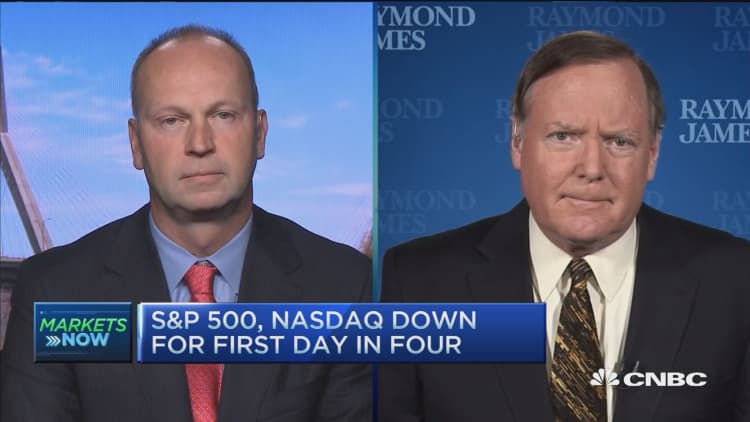
Amid a world of negative interest rates and slow growth, investors have stepped up demand for gold in record-breaking fashion.
Gold demand surged 21 percent in the first quarter of 2016, which is the fastest pace on record, according to a World Gold Council report released Thursday, which said the rise came even as central bank buying dipped and demand for jewelry slowed as well.
Even though inflation — considered a cornerstone to gold's popularity — remained in check throughout much of the developed world, global uncertainty fueled investor desire for the yellow metal. The price of gold is up more than 20 percent year to date and rose nearly 16 percent in the first quarter alone. It was the strongest price performance in nearly three decades.
Council officials attributed the rise to three principal factors: negative interest rates instituted by central banks in Japan and Europe (and talk that the Fed also was discussing negative rates); Chinese currency devaluation; and the likelihood that the the trajectory of interest rate hikes in the U.S. will be slower than initially expected.
Other related factors include a slowdown in U.S. dollar appreciation and reduced forecasts for global growth.
Those conditions are likely to remain in place, said Juan Carlos Artigas, the gold council's director of investment research.
"We do think that a good portion of the activity that we've seen so far this year is linked to strategic perspectives on gold," Artigas said in an interview. Investors on the sidelines "see it as much more of a long-term strategic asset and are coming back again."
Gold in demand
| Gold demand | Tonnes | U.S. dollar value ($mm) |
|---|---|---|
| Q1 2015 | 1,070.40 | 41,932.20 |
| Q1 2016 | 1,289.80 | 49,040.20 |
| 5-year average | 1,114.70 | 51,128.10 |
| Y-o-Y change | 21% | 17% |
Source: Source: World Gold Council
Exchange-traded funds reflected much of the demand, with inflows hitting a seven-year high. The council report indicated "anecdotal evidence that many of these inflows are from investors initiating or rebuilding strategic, long-term holdings after the wash-out of positions since early 2013."
Those driven from the market are looking to come back. Gold is again being seen not only as a store of value and inflation hedge but also as a diversification tool in an investing world were asset correlation remains strong.
The leading gold fund, the SPDR Gold Trust, is by far the most popular of all ETFs in 2016, with new inflows of $7.6 billion to the $34.1 billion fund, according to FactSet. The iShares Gold Trust ETF has seen $1.5 billion in new money, bringing its assets to just more than $8 billion.
"From the demand point of view, investment bank and central bank demand ... has created a structural shift that will result in stronger demand not only as we see now but over the long run," Artigas said.
However, central bank demand actually slowed considerably in the first quarter, falling 3 percent annually and 31 percent from the fourth quarter. However, the council believes central banks and other institutions will remain net buyers. Russia upped its purchases by 52 percent from the same period a year ago, while China and Kazakhstan also were significant purchasers.
Demand for jewelry slowed modestly as well, with a decline of 3 percent in electronics.



